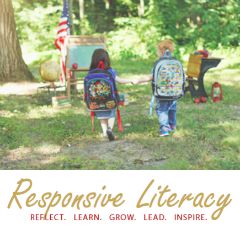Last week we focused on Persistence, with a review on Optimism. Click here for our One Sheet on optimism and the One Sheet on persistence.
This week, we are introducing Flexibility! Here is the One Sheet for flexibility. There are also poster in that link, with graphics thanks to Ashley Hughes.
All of this mindset work is, of course, inspired by the work of Kristine Mraz and Christine Hertz and their book:
When someone is flexible, they know that there in not one way of doing something. They often persevere through a challenge and show persistence because they see that there are tools available to them to try. I like to think about this as the many ways I could get to work each morning. If there is a traffic back up, there are many routes I can take. It might not be my favorite route, but having those options gives me the flexibly to get to work when there is a road block.
One special thing about people who think with flexibility is their ability to change their minds when they are given new information. They can reassess the problem and think about how they are solving it, and change directions. This is critical to problem solving.
What does that mean for our students? Perhaps things like:
Knowing a book is too hard, and seeing the options to solve or support that.
Using our CAFE Boards, knowing that those options are choices for readers to make and apply.
Knowing that they can't figure out how to subtract the numbers, and finding tools to help them.
Struggling with a difficult assignment, and using a few strategies to help from getting stuck.
Costa and Kallick (2000) describe flexible thinkers as people who can see from more that one perspective. They can see from their own perspective, another's perspective, a bird's eye view, and a worm's eye view. This ability to change perspective and see things in more than one way helps them come up with different paths to solve the same problem.
So, what about a pig's eye perspective?


Our second grade teachers were introducing their fairy tale unit this week, and they decided to do it with a little STEAM. (I think their end products were works of ART, so I added the A.)
All four classes used flexibility in their materials and how they tested the houses as "wolf proof." But, they basically all had their students use materials to build houses that would withstand the huffing and puffing of the Big, Bad Wolf. Watching them create the houses showed their persistence and flexibility at times of challenge. Marshmallows can be a finicky building material, and straw (whether the plastic or plant kind) is not the easiest material to manipulate. Some homes were pretty flat, and others had walls to protect their pigs. But, ALL students showed persistence in the task and built a house! A few of the classes then had them rotate to a different set of building materials, showing them how different tools make the process different. Flexibility in action!
At the end, I caught +Erin Flynn's class discuss how they were persistent while building. The kids said things like, "The sticks were easy because they were pointy" or "The straws were hard, because they fell down when you stacked them." One said, "It was just gross and sticky, but I did it anyway." Another said, "I tried the same things over and over again" (referring to those tricky straws). Their teacher responded with:
"I didn't see a single one of you giving up! You kept trying it again and didn't give up!"
Now, how often can we honestly say that about a lesson?

Isn't that great? I love the idea of teaching these mindsets in situations like this! Low stress, creative challenges that allow kids to experience the real struggles and successes that we feel in life. Plus, it ties directly to their study on the Three Little Pigs.
Kids who struggle with a book might just close it.
Kids who struggle with building a toothpick house might think more flexibly and choose a new strategy.
Perhaps this is where we need to teach that type of thinking, and reinforce, scaffold, and celebrate transfer to academic struggle.
Thanks +Stacy Rammer +Margaret Daly +Erin Flynn +Stephany Berryhill and +Claudia Scott for starting your new unit of study in such a dynamic way.
Want one more pig's eye view on flexibility? Watch Ormie the Pig use flexibility and persistence to get the cookies at the top of the fridge. +Lori Horne showed me this video a few years ago, and I always seem to find a new way to use it.
Ok, Hiawatha! Let's explore FLEXIBILITY! #hiawathapride
How does your classroom embrace flexibility?
How do students show flexibility?
How do you see flexibility, optimism and persistence
working together in your class?























































